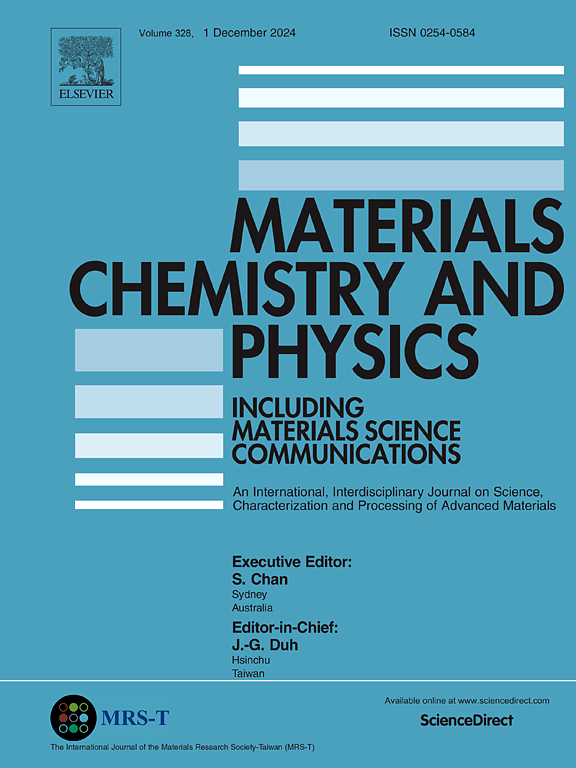退火诱导的气相沉积二氧化碲薄膜相变及其结构和化学分析
IF 4.7
3区 材料科学
Q2 MATERIALS SCIENCE, MULTIDISCIPLINARY
引用次数: 0
摘要
通过热真空沉积法在玻璃基底上合成了二氧化碲(TeO2)薄膜,并以 50 °C 的间隔将样品从 250 °C 退火至 400 °C。研究发现,退火对 TeO2 薄膜的结构、光学和电学特性有显著影响。X 射线衍射光谱(XRD)显示,随着温度的升高,晶体尺寸增大,微应变和位错密度相应减小。在 350 ℃ 和 400 ℃ 下退火的样品出现了从γ-TeO2 到 β-TeO2 的相变,因为 β 相在热力学上是有利的,自由能变化较大。对所有退火样品进行的 X 射线光电子能谱分析证实,通过空气退火,金属碲形成 TeO2 的情况有所改善。XPS 分析还证实了间隙氧的存在,且其浓度在 400 °C 时有所增加。拉曼光谱用于研究振动模式随温度的变化,并将这些发现与其他结构和化学分析联系起来。TeO2 薄膜的光致发光研究揭示了缺陷态随退火温度的变化。缺陷相关发射(绿色、近红外)强度的降低表明结晶度有所提高,而退火后低级缺陷峰的消失又反过来证明了这一点。本文章由计算机程序翻译,如有差异,请以英文原文为准。
Annealing-induced phase transformation in vapor deposited tellurium dioxide thin films and its structural, chemical analysis
Tellurium dioxide (TeO2) thin films were synthesized by thermal vacuum deposition on glass substrate and samples were annealed from 250 °C to 400 °C at 50 °C interval. The annealing was found to have a significant impact on the structural, optical, and electrical properties of TeO2 thin films. X-ray diffraction spectra (XRD) revealed an increase in crystallite size and corresponding decrease in micro strain and dislocation density with increasing temperature. Annealed sample at 350 °C and 400 °C showed phase change from γ-TeO2 to β-TeO2 since β phase is thermodynamically favourable with greater free energy change. X-ray Photoelectron spectroscopy of all annealed sample confirm the improvement in formation of TeO2 from metallic Tellurium with air annealing. The XPS analysis also confirmed the existence of interstitial Oxygen, and its concentration increased at 400 °C. Raman spectroscopy employed to investigate the variation in vibrational modes with temperature and correlate these findings with other structural and chemical analyses. Photoluminescence study of TeO2 thin films reveals evolution of defect states with annealing temperature. Decrease in intensity of defect-related emissions (green, near-IR) suggests improved crystallinity which was in turn supported by the disappearance of low-level defect peaks upon annealing.
求助全文
通过发布文献求助,成功后即可免费获取论文全文。
去求助
来源期刊

Materials Chemistry and Physics
工程技术-材料科学:综合
CiteScore
8.70
自引率
4.30%
发文量
1515
审稿时长
69 days
期刊介绍:
Materials Chemistry and Physics is devoted to short communications, full-length research papers and feature articles on interrelationships among structure, properties, processing and performance of materials. The Editors welcome manuscripts on thin films, surface and interface science, materials degradation and reliability, metallurgy, semiconductors and optoelectronic materials, fine ceramics, magnetics, superconductors, specialty polymers, nano-materials and composite materials.
 求助内容:
求助内容: 应助结果提醒方式:
应助结果提醒方式:


